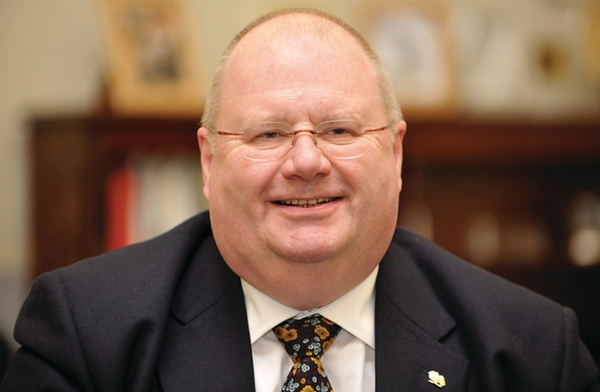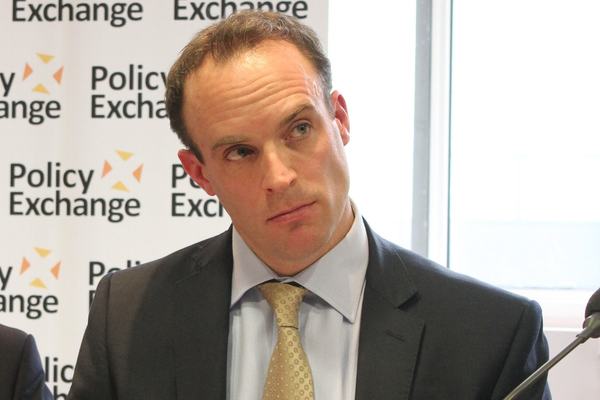You are viewing 1 of your 1 free articles
 Jules Birch
Jules BirchRaab furore shines a light on five wasted years under Pickles and Shapps
Jules Birch uses Dominic Raab’s comments on house prices to reflect on the recent history of housing and missed opportunities under the 2010-15 coalition government
Dominic Raab’s comments about immigration and house prices may have sparked a furore, but it also shines a light on something else in the recent history of housing.
Amid mounting pressure, on Friday the Ministry for Housing, Communities and Local Government (MHCLG) published updated analysis that he had relied on for his claim that he had been told by civil servants that immigration has increased house prices by 20% over the last 25 years.
When I tweeted about it, the man himself came back to me with this:
Appreciate your rigour, Jules, and this should be debated. For completeness: I was asked specifically about the impact of immigration; I did indeed say care was needed with the data; and I was right that immigration put av prices up by ~20%. We need a balanced approach.
— Dominic Raab (@DominicRaab)Appreciate your rigour, Jules, and this should be debated. For completeness: I was asked specifically about the impact of immigration; I did indeed say care was needed with the data; and I was right that immigration put av prices up by ~20%. We need a balanced approach.
— Dominic Raab (@DominicRaab) April 13, 2018
In fairness, he could have added that the increase was actually 21% but, as I suggested last week, that is minor in comparison with the 284% total rise in prices that happened between 1991 and 2016, and accounts for just £11,000 of the £152,000 increase.
“The analysis does not really prove very much either way.”
According to the analysis, increases in real earnings were a much more important factor in price rises.
Look a little deeper, though, and the analysis does not really prove very much either way.
It is based on an econometric model developed at the University of Reading more than 10 years ago for the National Housing and Planning Advice Unit (NHPAU), a quango set up by the last Labour government to give independent advice on the levels of housebuilding needed to keep it affordable.
The model may have been able to explain price rises up to that point, although the MHCLG analysis says it should be used with caution to draw “stylised inferences”.
However, a model developed at a time when interest rates had fluctuated between 5 and 15% over the previous 25 years cannot explain the impact of cuts in interest rates to record lows and mortgage rates to well under 5% in the wake of the financial crisis in 2008.
It’s not the model’s fault, but that means it cannot account for arguably the biggest single reason why prices have risen since the crisis.
As for the NHPAU, it was abruptly abolished by Eric Pickles and the Conservatives in 2010 because they saw it as part of Labour’s ‘Stalinist’ system of housebuilding targets.
But now it has arisen Lazarus-like from the dead – and not just because civil servants had to find something to give to the minister.
Go back to the debates that happened when it was still around and they seem vaguely familiar.
Here it is in 2007 warning that house prices would rise to 10 times salaries by 2026 without more housebuilding, prompting the then-housing minister to warn that 190,000 was not enough.
That was what lay behind Labour’s targets of two million new homes by 2016 and three million by 2020.
Here is me blogging in 2008 after it warned the next minister that the targets were not enough and came under attack from the Conservatives for being ‘bonkers’.
Here is me blogging in 2009 about the window of opportunity that existed to tackle affordability and about the need for action that went beyond what I called a ‘one-club policy of increasing supply’.
That window closed without the opportunity being taken, and by 2016 Labour’s first target had been missed by more than 350,000 homes.
Finally, here it is again after the 2010 election. The Conservatives had just abolished the NHPAU, with new housing minister Grant Shapps arguing that “top-down targets and bloated bureaucracy haven’t worked” and that his New Homes Bonus would do the job instead.
“History is not just repeating itself, but revealing the baleful legacy of Mr Pickles and Mr Shapps.”
In a letter to Mr Shapps, the outgoing NHPAU chair Peter Williams warned of “increasingly severe social and economic consequences and house prices will become less and less affordable with more dangerous booms and busts”.
And the NHPAU said that a target of more than 300,000 new homes a year was required: “Getting back to the level of housebuilding we saw before the recession is nowhere near enough. We need to deliver half as many again extra homes.”
Which brings things full circle to the other point raised by the Dominic Raab furore.
Eight years (and five more housing ministers) on, and 300,000 a year is exactly the target that the latest Mr Buggins is charged with delivering by the mid-2020s.
History is not just repeating itself, but revealing the baleful legacy of Mr Pickles and Mr Shapps, and the five wasted years when there were no targets. What was it they used to say about shining a light?
Jules Birch, award-winning blogger










